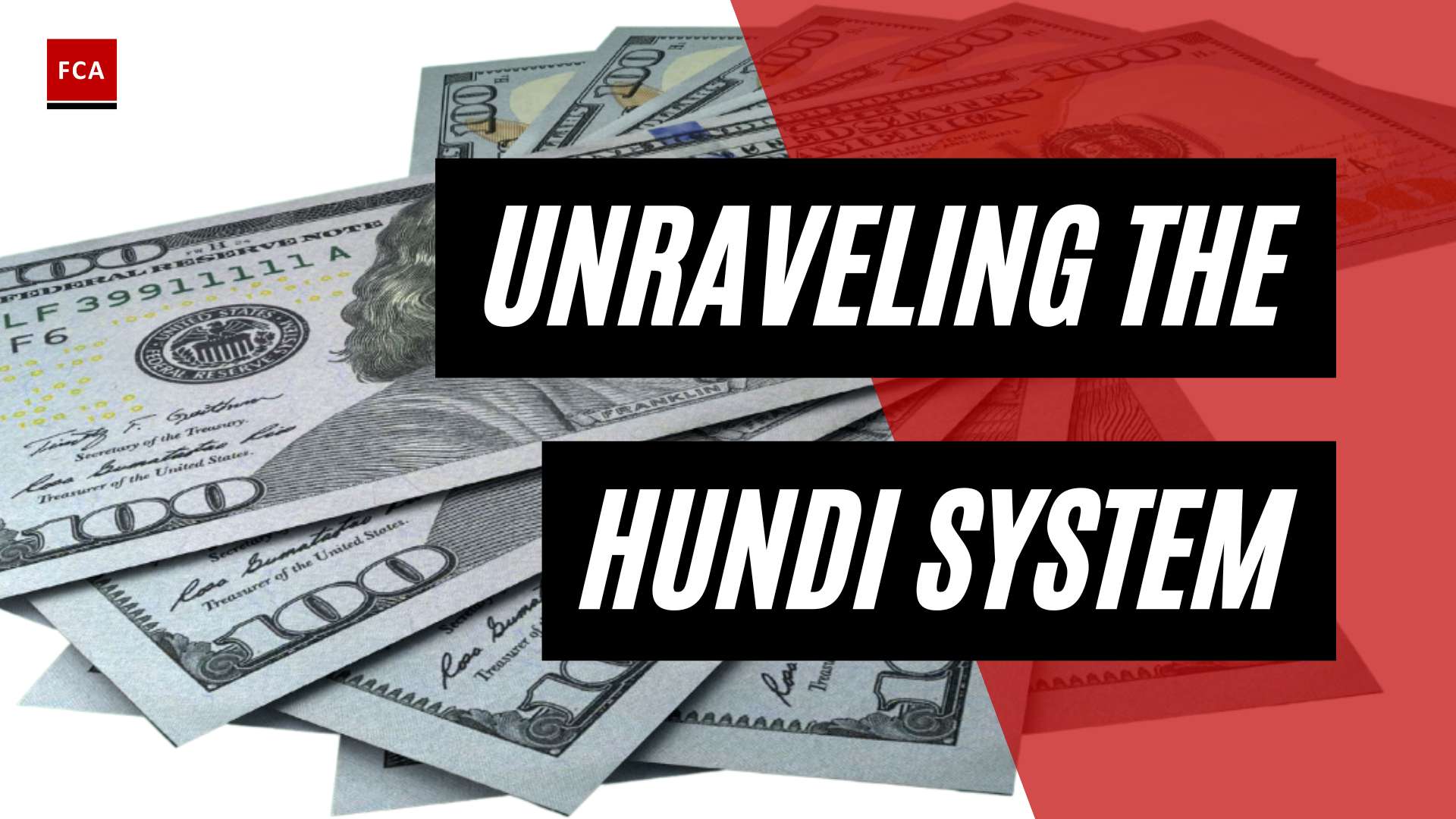Understanding Money Laundering in Banks
Money laundering is a complex process that involves making illegally obtained money appear legitimate. It is a global issue that affects various sectors, including the banking industry. Understanding the concept of money laundering and why banks are vulnerable to such activities is essential in combating this illicit practice.
What is Money Laundering?
Money laundering refers to the process of disguising the origins of illicitly gained funds to make them appear legal and legitimate. It involves a series of transactions that obscure the trail of money, making it difficult for authorities to trace its illegal source. The goal of money laundering is to integrate the illicit funds into the legitimate financial system, making it challenging to distinguish between clean and dirty money.
Money launderers employ various techniques to achieve their objectives, such as manipulating financial transactions, creating fake businesses, engaging in trade-based schemes, or investing in luxury assets. These methods allow criminals to conceal the origins of their funds and enjoy the proceeds of their illegal activities.
To learn more about the different methods used in money laundering, refer to our article on money laundering examples.
Why Banks are Vulnerable to Money Laundering
Banks have become prime targets for money laundering due to several factors. Criminals exploit these vulnerabilities to move and conceal illicit funds within the banking system. Some of the reasons why banks are susceptible to money laundering include:
-
Sophisticated Financial Infrastructure: Banks offer a vast network of branches, numerous accounts, and various mechanisms for moving funds across borders. This complexity provides money launderers with opportunities to exploit the system and hide the true origins of their funds.
-
Global Reach: Banks operate internationally, allowing money launderers to transfer funds across jurisdictions. This enables them to exploit differences in regulatory frameworks and utilize offshore financial centers to obfuscate the trail of money.
-
Perceived Legitimacy: The banking sector is generally viewed as a legitimate and trustworthy industry. Criminals take advantage of this perception to make their illicit funds appear lawful by integrating them into the formal financial system.
-
Complex Transactions: Money launderers often engage in intricate transactions within and between financial institutions to obscure the source of their funds. By utilizing multiple accounts, layering transactions, and employing other sophisticated techniques, they aim to launder money effectively.
These factors make banks an ideal vehicle for money laundering activities. Criminals utilize the banking system’s infrastructure, global reach, and perceived legitimacy to facilitate their illicit financial operations.
To combat money laundering effectively, banks and regulatory authorities need to implement robust Anti-Money Laundering (AML) programs. These programs help detect and prevent money laundering activities, ultimately safeguarding the integrity of the financial system. For more information on AML programs, explore our article on money laundering training.
By understanding the nature of money laundering and the vulnerabilities of the banking sector, efforts can be made to develop effective strategies and regulations to combat this illicit practice.
Methods of Money Laundering in Banks
Money laundering in banks involves various techniques and strategies used by criminals to make illicitly obtained funds appear legitimate. Here are some common methods employed in money laundering schemes:
Smurfing: Exploiting Funds Transfer Systems
Money launderers employ the technique of “smurfing” to exploit funds transfer systems and avoid detection. In this method, large amounts of illicit cash are divided into smaller, less conspicuous transactions. These transactions are then conducted through multiple accounts or individuals to make the funds appear legitimate. By breaking down the large sums into smaller transactions, money launderers can evade suspicion and bypass reporting thresholds set by regulatory authorities (Investopedia).
Fake Businesses as Money Laundering Fronts
Another method used by money launderers is the establishment of fake businesses to facilitate the movement and laundering of illicit funds. These fake businesses are designed to appear legitimate, making it difficult for authorities to differentiate between legal and illegal activities. Through these fronts, money launderers can disguise the origins of their funds and create a paper trail that suggests lawful transactions (Investopedia).
Black Market Peso Exchange
The “Black Market Peso Exchange” is a money laundering method commonly used in Latin America. In this scheme, drug cartels and other black-market entities sell U.S. dollars to peso brokers in the U.S. These peso brokers then sell the dollars to legitimate businesses in Latin America. By using this method, money launderers can convert their drug proceeds into local currency, effectively laundering their illicit funds while disguising the source of the money (Investopedia).
Investments in Luxury Assets
Money launderers often invest their illicit funds in luxury assets such as real estate, art, and jewelry. These assets serve as a means to convert the illegal proceeds into seemingly legitimate funds. By purchasing high-value items, money launderers can later sell them and integrate the laundered money back into the legal economy. This method allows them to obscure the origins of the funds and potentially generate additional profit from the appreciation of these assets (Investopedia).
Understanding these methods of money laundering in banks is essential for developing effective anti-money laundering (AML) measures. By recognizing the techniques employed by money launderers, banks can implement robust systems and procedures to detect and prevent illicit financial activities. Stay informed about money laundering red flags and ensure compliance with money laundering laws to safeguard the integrity of the financial system.
The Role of Banks in Money Laundering
Banks play a crucial role in the process of money laundering, offering a vast network of branches, numerous accounts, and multiple mechanisms for moving funds across borders. This makes them an ideal vehicle for money laundering activities. Criminals exploit various factors that contribute to the involvement of banks in money laundering schemes.
Banks as Ideal Vehicles for Money Laundering
Money launderers are drawn to the banking system due to its sophistication, global reach, and perceived legitimacy. According to estimates, up to $800 billion to $2 trillion is laundered globally each year, accounting for 2% to 5% of global GDP (Financial Crime Academy). The sheer size and complexity of the banking industry make it easier for illicit funds to be blended with legitimate transactions, making detection more challenging.
Banks provide a range of services that enable money launderers to obscure the origins of their illicit funds. These services include account opening, wire transfers, currency exchange, and trade finance. Criminals take advantage of these services to move funds through complex transactions, both within and between financial institutions. By layering transactions and utilizing multiple accounts, they attempt to create a convoluted trail that conceals the true source of the funds.
Complex Transactions and Concealing Funds
The complexity of banking transactions can make it difficult for authorities to identify suspicious activities. Money launderers strategically structure transactions to avoid arousing suspicion. They may break down large amounts of illicit funds into smaller, seemingly legitimate transactions, a process known as “smurfing” (Investopedia). This technique allows them to exploit funds transfer systems, evading detection by authorities.
Concealing the true nature of funds is another tactic employed by money launderers. They may create fake businesses or use legitimate businesses as fronts to move and launder money. By appearing as legitimate entities, these businesses make it harder for authorities to detect illicit activities (Investopedia). The banking system provides the necessary infrastructure and mechanisms to facilitate these deceptive practices.
Global Reach and Perceived Legitimacy
The global reach of the banking system further contributes to its attractiveness for money laundering. Banks operate in multiple jurisdictions, allowing funds to be moved across borders easily. This international network enables money launderers to exploit jurisdictional differences and regulatory loopholes, making it more challenging for authorities to track and intercept illicit funds.
Moreover, banks are often perceived as trustworthy and legitimate financial institutions. This perception increases the likelihood that illicit funds will go undetected. Criminals exploit the reputation of banks to legitimize their illicit gains, making it easier to integrate the funds into the legitimate financial system.
The involvement of banks in money laundering has severe consequences for financial institutions, the stability of the financial system, and the overall economic health. It is crucial for banks to implement robust anti-money laundering (AML) programs and adhere to regulatory requirements to mitigate the risks associated with money laundering activities. By reporting suspicious activities and maintaining strong risk-based AML programs, banks can contribute to a safer and more secure financial environment.
Consequences of Money Laundering in Banks
Money laundering in banks has far-reaching consequences that extend beyond the immediate financial implications. The impact of these illicit activities can be detrimental to both the reputation of financial institutions and the stability of the overall financial system. Additionally, money laundering poses significant risks to economic health.
Impact on Financial Institutions’ Reputation
Money laundering scandals have resulted in bank collapses and shocked entire countries, leading to an erosion of trust in the financial system. Banks facing financial integrity concerns due to money laundering have experienced sharp stock price drops, perceived elevated credit risks, liquidity impacts, equity price declines, higher costs of insuring against default, and contagion dynamics with spillover effects on other regional banks (IMF Blog). The loss of public confidence can have long-lasting consequences, making it challenging for banks to regain trust and attract customers.
Undermining the Stability of the Financial System
Money laundering undermines the stability of the financial system by introducing illicit funds into the legitimate economy. The integration of dirty money can distort asset prices, create imbalances, and increase systemic risks. When banks unknowingly facilitate money laundering activities, they become unwitting accomplices in the illicit movement of funds. This can lead to severe repercussions, as seen in high-profile cases that have exposed vulnerabilities in the global financial system.
Risks to Economic Health
The consequences of money laundering extend beyond the financial sector. Illicit funds flowing through banks can have a detrimental effect on economic health. Money laundering diverts resources away from productive investments and legitimate economic activities. It can also create distortions in markets and hinder economic growth. Moreover, when money laundering is pervasive, it can lead to ineffective revenue collection, governance weaknesses, reputational risks, and loss of correspondent banking relationships (IMF).
To mitigate the adverse effects of money laundering, it is crucial for banks to implement robust anti-money laundering (AML) programs. These programs play a vital role in safeguarding the integrity and stability of the international financial system. Regulatory authorities enforce compliance with AML regulations, and failure to maintain effective AML programs can result in significant penalties and fines. By reporting suspicious activities and adhering to strong risk-based AML programs, banks can contribute to the prevention and detection of money laundering activities.
In summary, money laundering in banks has severe consequences that extend beyond the financial realm. It tarnishes the reputation of financial institutions, undermines the stability of the financial system, and poses risks to economic health. Recognizing the importance of combating money laundering, regulatory authorities and banks alike must remain vigilant in their efforts to prevent and detect illicit financial activities.
Anti-Money Laundering Measures in Banks
To combat the pervasive issue of money laundering in the banking sector, financial institutions are required to implement robust anti-money laundering (AML) programs. These programs play a crucial role in detecting and preventing illicit financial activities, safeguarding the integrity of the banking system. Let’s explore the importance of robust AML programs, the regulatory authorities overseeing compliance, and the significance of reporting suspicious activities.
Importance of Robust AML Programs
In the fight against money laundering, strong AML programs are essential for banks. These programs are designed to identify and mitigate the risks associated with money laundering and terrorist financing. Banks must establish internal controls and procedures to ensure the detection and reporting of suspicious transactions. By adopting risk-based approaches, banks can tailor their AML efforts to address specific vulnerabilities within their operations, customer base, and geographic locations. Implementing comprehensive AML programs not only helps banks comply with regulatory obligations but also protects their reputation and reinforces public trust in the financial system.
Regulatory Authorities and Fines
Regulatory authorities play a vital role in overseeing the compliance of banks with AML regulations. They set guidelines, establish standards, and conduct inspections to ensure that financial institutions are effectively implementing AML measures. Failure to comply with AML requirements can result in severe penalties and fines. Regulatory bodies, such as the U.S. Department of Justice and U.S. Department of the Treasury, have assessed substantial fines against banks that have failed to maintain effective AML programs. For instance, in 2012, one bank faced a staggering $1.9 billion fine as a consequence of inadequate AML controls. These penalties serve as a strong deterrent and emphasize the importance of adhering to AML regulations to protect the integrity of the financial system.
Reporting Suspicious Activities
Banks have a legal duty to promptly detect and report suspicious activities involving large sums of money. When encountering transactions that raise red flags, banks have an obligation to notify the relevant Financial Intelligence Units (FIUs). Reporting suspicious activities is a crucial component of AML efforts, as it enables authorities to investigate potential money laundering schemes and take appropriate actions. By fulfilling their reporting obligations, banks contribute to the collective efforts of law enforcement agencies, regulatory bodies, and FIUs in combating financial crimes.
In summary, the implementation of robust AML programs is of utmost importance for banks to combat money laundering. These programs ensure adherence to regulatory requirements, protect the integrity of financial institutions, and contribute to the overall stability of the financial system. By working in conjunction with regulatory authorities, reporting suspicious activities, and maintaining a strong risk-based approach, banks can strengthen their defenses against money laundering and fulfill their role in safeguarding the global financial system.
High-Profile Money Laundering Scandals
Money laundering scandals involving banks have made headlines over the years, exposing vulnerabilities within the financial system. Here are some notable high-profile money laundering scandals:
Wachovia Bank Scandal
Wachovia Bank, a financial institution in the United States, found itself entangled in a money laundering scandal involving Mexican drug cartels. Between 2004 and 2007, Wachovia allowed drug cartels to launder approximately USD 390 billion through its branches. The money was derived from drug sales in the U.S., which were then smuggled across the Mexican border. This scandal shed light on the importance of robust Anti-Money Laundering (AML) procedures and led to a $160 million fine for Wachovia. The bank also committed to enhancing its AML procedures to prevent such incidents in the future. (Sanction Scanner)
Standard Chartered Bank Violations
Standard Chartered Bank faced penalties for violating U.S. sanctions against several countries, including Iran, Burma, Libya, Sudan, Zimbabwe, Cuba, and Syria. In 2012, the bank was fined $670 million for these violations. However, it continued to disregard sanctions and AML compliance, resulting in further penalties totaling $1.1 billion in 2019 from U.S. and U.K. authorities. This case highlights the importance of strict adherence to AML regulations and the severe consequences of non-compliance. (Sanction Scanner)
Danske Bank’s Estonian Branch Scandal
Danske Bank’s Estonian branch became embroiled in a significant money laundering scandal. It allegedly acted as a conduit for thousands of suspicious customers, enabling illicit transactions amounting to approximately $228 billion between 2007 and 2015. Danish authorities imposed substantial fines totaling $2 million and attributed blame to several managers. This scandal underscores the need for robust AML compliance programs and effective control measures to prevent financial institutions from being exploited for money laundering activities. (Sanction Scanner)
Bank of Credit and Commerce International (BCCI) Scandal
The Bank of Credit and Commerce International (BCCI) was involved in one of the most significant money laundering scandals in history. BCCI engaged in fraud and money laundering activities totaling up to U.S. $23 billion. The bank was accused of falsified transactions, unregistered deposits, and complex money laundering schemes. These illicit activities led to the closure of BCCI in 1991. This scandal emphasized the importance of implementing comprehensive AML compliance frameworks to prevent financial institutions from being exploited for illicit purposes. (Sanction Scanner)
Nauru’s Transformation into a Tax Haven
Nauru, a small island country known for mining, became a tax haven in the 1990s due to a corrupt government. Russian criminals took advantage of this situation and laundered an estimated $70 billion through shell banks in Nauru in 1998. As a result, Nauru faced severe sanctions and was designated a money-laundering state by the U.S. Treasury. To rectify the situation, Nauru implemented AML and tax haven laws in 2005 with the assistance of the Financial Action Task Force (FATF). This case exemplifies the importance of international cooperation and the implementation of robust AML measures to combat money laundering. (Sanction Scanner)
These high-profile money laundering scandals serve as reminders of the significance of implementing strong AML programs, adhering to regulatory guidelines, and continuously monitoring suspicious activities within the banking sector.
Legal Framework and Enforcement
To combat money laundering in banks, there are legal frameworks and enforcement measures in place to ensure compliance and deter illicit activities. One key piece of legislation in the United States is the Bank Secrecy Act (BSA), which plays a crucial role in the fight against money laundering. Let’s explore the BSA and the importance of robust Anti-Money Laundering (AML) programs within banks.
The Bank Secrecy Act (BSA) and AML Programs
The Bank Secrecy Act (BSA) is a federal law in the United States that requires financial institutions, including banks, to establish and maintain effective AML programs. These programs are designed to detect and prevent money laundering activities, as well as to report suspicious transactions to the appropriate authorities. The BSA sets forth regulatory requirements and expectations related to BSA/AML compliance.
Under the BSA, banks are required to implement comprehensive AML programs that include the following components:
-
Internal Policies, Procedures, and Controls: Banks must establish and maintain policies, procedures, and internal controls that are reasonably designed to prevent money laundering and comply with the law. These measures should cover customer due diligence, risk assessment, and monitoring of transactions.
-
Designation of a Compliance Officer: Banks must designate a qualified individual to serve as the AML compliance officer. This individual is responsible for overseeing the implementation and maintenance of the AML program, as well as ensuring compliance with regulatory obligations.
-
Ongoing Employee Training: Banks must provide regular training to employees to ensure they are aware of their roles and responsibilities in detecting and reporting suspicious activities. Training programs should cover money laundering risks, red flags, and reporting obligations.
-
Independent Testing and Review: Banks are required to conduct independent testing of their AML programs to assess their effectiveness and compliance with regulatory requirements. This testing should be conducted by qualified personnel or third-party firms.
Penalties for Failure to Maintain Effective AML Programs
Failure to maintain an effective AML program can have severe consequences for banks. The U.S. Department of Justice and U.S. Department of the Treasury have assessed penalties against banks that have failed to meet their AML obligations. In some cases, these penalties have amounted to billions of dollars. For example, in 2012, one individual case resulted in a $1.9 billion fine (FinCEN).
These penalties serve as a deterrent and emphasize the importance of banks’ commitment to combatting money laundering. By maintaining robust AML programs, banks can demonstrate their dedication to compliance and reducing the risk of facilitating illicit financial activities.
Importance of Strong Risk-Based AML Programs
Given the complex nature of money laundering, it is crucial for banks to adopt and maintain strong risk-based AML programs. These programs are designed to identify and mitigate the risks associated with money laundering and terrorist financing. By conducting risk assessments, banks can tailor their AML efforts to focus on areas of higher risk.
A strong risk-based AML program should include proactive monitoring of customer transactions, enhanced due diligence for higher-risk customers, and the implementation of technological solutions to detect suspicious activities. Regular updates and adjustments to the program based on evolving risks and regulatory requirements are also essential.
By prioritizing the development and maintenance of robust AML programs, banks can play a pivotal role in combating money laundering and promoting the integrity of the financial system.
Trade-Based Money Laundering
One of the methods used in the complex world of money laundering is trade-based money laundering. This technique involves manipulating trade transactions to transfer money illegitimately while making it appear as legitimate business transactions. Criminals exploit the value, volume, or type of goods being traded to obscure the illicit origins of funds and facilitate money laundering activities (LexisNexis).
Trade-based money laundering can take several forms, including over- or under-invoicing, multiple invoicing, and falsely describing goods. Here are some common techniques employed in trade-based money laundering:
-
Over- or Under-Invoicing: Criminals may manipulate the value of goods on invoices to either overstate or understate their worth. Over-invoicing allows them to move funds across borders and create a discrepancy between the declared value of the goods and the actual value. Under-invoicing, on the other hand, is used to conceal the true value of goods and transfer money covertly.
-
Multiple Invoicing: In this method, criminals create multiple invoices for a single transaction with different values, quantities, or descriptions of goods. By doing so, they can confuse authorities and financial institutions, making it difficult to trace the illicit funds through the convoluted paper trail.
-
False Descriptions of Goods: Criminals may misrepresent the nature or quality of goods being traded to further obscure the illicit funds. For example, they might declare a shipment of inexpensive items as high-value luxury goods to justify the movement of large sums of money.
Trade-based money laundering is particularly challenging to detect and prevent. The complexity of international trade, the involvement of multiple parties, and the sheer volume of transactions make it an attractive avenue for money launderers. Financial institutions and regulatory authorities play a crucial role in combating this method of money laundering by implementing robust anti-money laundering (AML) programs and closely monitoring trade transactions.
To effectively combat trade-based money laundering, financial institutions need to be vigilant and employ advanced techniques for detecting red flags and suspicious activities. This includes monitoring patterns of trade transactions, conducting thorough due diligence on customers and counterparties, and leveraging technology to identify anomalies in trade data.
By understanding the techniques used in trade-based money laundering, financial institutions and regulatory bodies can enhance their efforts to prevent illicit funds from infiltrating the global financial system. Robust AML programs, enhanced due diligence, and collaboration between financial institutions and law enforcement agencies are crucial in combating this form of money laundering and protecting the integrity and stability of the global economy.








